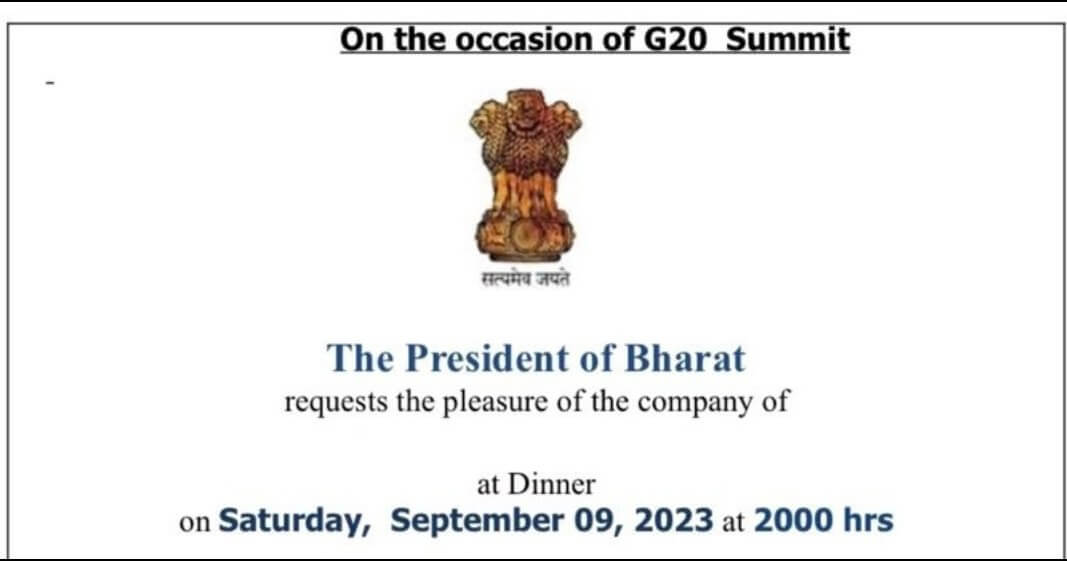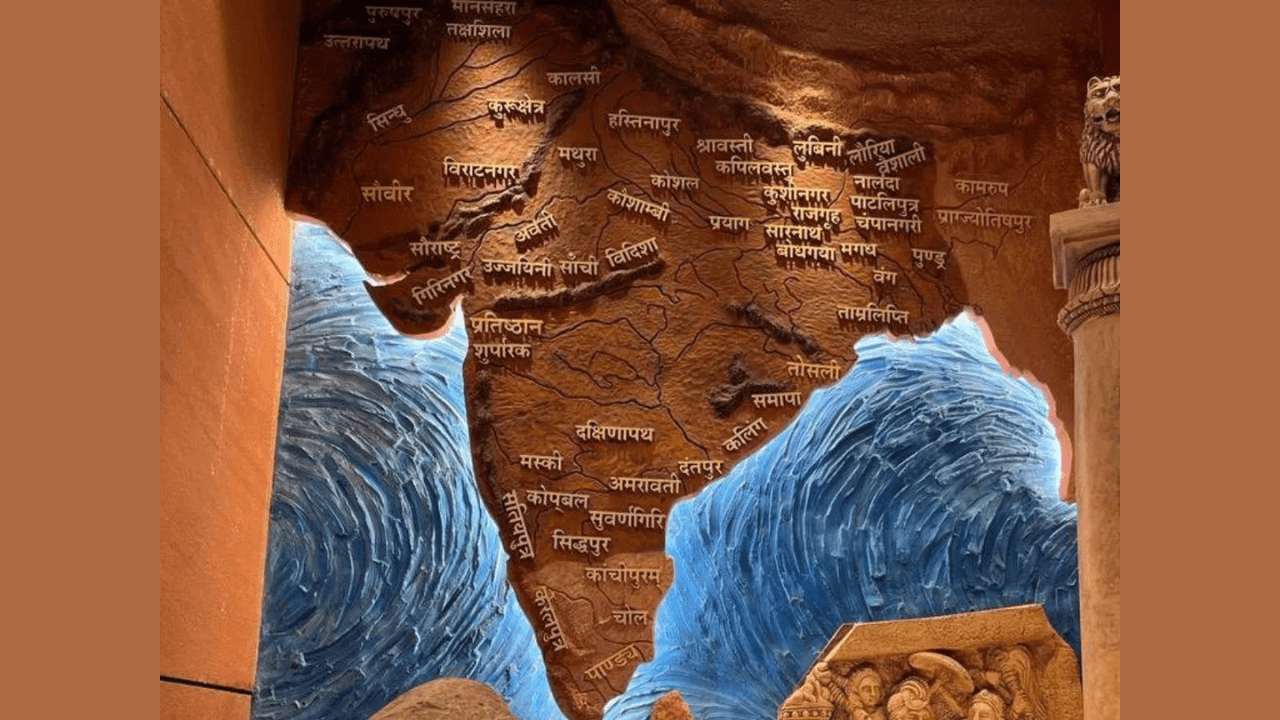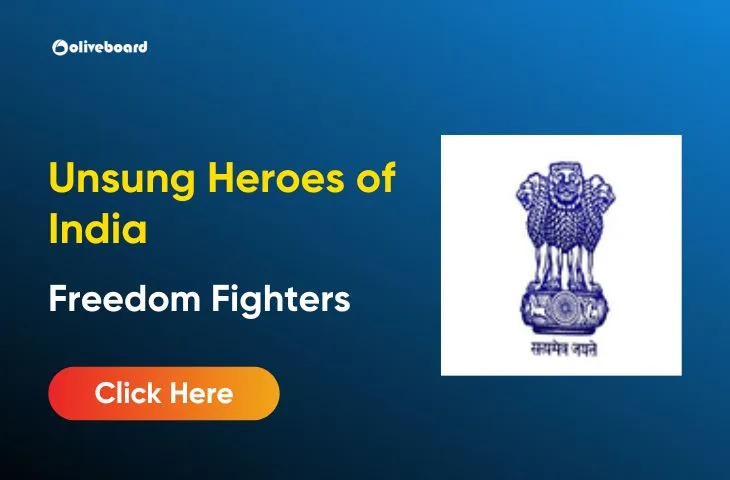The recent use of ‘President of Bharat’ in an official G20 summit dinner invitation has sparked discussions about the potential name change for India to ‘Bharat.’ It’s important to note that while this has generated some attention, it doesn’t necessarily indicate an imminent name change for the country.

Significance of the name ‘Bharat’
The name “Bharat” has historical and cultural significance in India, being one of the country’s traditional names in various Indian languages. India is officially known as the “Republic of India” in English and “Bharatiya Ganarajya” in Hindi. The use of “Bharat” alongside “India” is not uncommon in official documents and contexts.
The idea of officially renaming the country “Bharat” has been proposed at various points in India’s history, often as a way to emphasize its cultural and historical roots. However, such proposals typically generate debates and discussions among political leaders and the public.
Changing the official name of a country is a significant decision with political, legal, and cultural implications. It often involves amendments to the country’s constitution and requires broad consensus among political leaders and citizens.
What does our Constitution say?
Article 1 in the Constitution states that India, that is Bharat, shall be a Union of States.
Origins of the Name – Bharat, Hindustan and India
The name Bharat is derived from the name of a Vedic king named Bharata. The name is mentioned in the Rigveda, one of the oldest scriptures of Hinduism. The Rigveda describes Bharata as a powerful and righteous king who ruled over a vast empire.
The name Hindustan is derived from the Persian word “Hindu”, which means “son of the Indus”. The Indus River is a major river in the Indian subcontinent. The name Hindustan was used by the Persians to refer to the lands that lie to the east of the Indus River.
The name India is derived from the Greek word “Indus”, which is also the origin of the name Hindustan. The Greeks were the first Europeans to encounter the Indian subcontinent and they called it India after the Indus River.
The name India is now the most commonly used name for the country. However, the names are used interchangeably.
Countries which have Changed their Name in Recent Times
- Turkiye – Formerly Turkey:
Turkish President Recep Tayyip Erdogan officially changed the name to Turkiye to better showcase the nation’s rich culture and heritage on the global stage. - Czechia – Formerly Czech Republic:
In April 2016, the Czech Republic streamlined its name to Czechia for simplicity, making it easier to recognize in sports and international marketing. - Eswatini – Formerly Swaziland:
Eswatini emerged as the new name, replacing Swaziland, to avoid confusion with Switzerland and embrace its indigenous roots. - The Netherlands – Formerly Holland:
Starting in January 2020, The Netherlands shifted its promotional focus away from Holland to present itself as an open, inventive, and inclusive nation. - Republic of North Macedonia – Formerly Macedonia:
To secure NATO membership and distinguish itself from Greece’s Macedonia region, it became the Republic of North Macedonia in February 2019. - Sri Lanka – Formerly Ceylon:
In 2011, Sri Lanka discarded its colonial-era name, Ceylon, to assert independence from the historical remnants of Portuguese and British rule. - Ireland – Formerly Irish Free State:
In 1937, Ireland adopted the name ‘Ireland’ and officially declared itself a republic. - Republic of Cabo Verde – Formerly Cape Verde:
In 2013, Cape Verde adopted the full Portuguese spelling, ‘Republic of Cabo Verde,’ in honor of its official language. - Thailand – Formerly Siam:
Siam transitioned to Thailand in 1939, briefly reverting to Siam between 1946 and 1948, before officially becoming the Kingdom of Thailand. - Myanmar – Formerly Burma:
In 1989, Myanmar replaced Burma as its official name, reflecting linguistic accuracy, despite the continued global use of the older name. - Cambodia:
Cambodia underwent various name changes over the years, reflecting its complex history, including the Khmer Republic, Democratic Kampuchea, State of Cambodia, and Kingdom of Cambodia. - Democratic Republic of Congo:
The Democratic Republic of Congo experienced multiple name changes, evolving from Congo Free State to Belgian Congo, Congo-Leopoldville, Republic of Congo, Republic of Zaire, and finally, the Democratic Republic of the Congo in 1997. - Iran – Formerly Persia:
Iran transitioned from Persia to Iran in 1935, altering how the country and its citizens were internationally identified, and sparking debates among Iranians.
- Weekly Current Affairs 2025 PDF For Bank, SSC, UPSC Exams
- Unsung Heroes of India: 10 Unknown Freedom Fighters You Should Know
- 26 December Current Affairs 2023 in English
- Daily Current Affairs 2025, Check Today’s Current Affairs
- April Month Current Affairs 2024, Download PDF
- June Month Current Affairs 2024, Download PDF

Hello, I’m Aditi, the creative mind behind the words at Oliveboard. As a content writer specializing in state-level exams, my mission is to unravel the complexities of exam information, ensuring aspiring candidates find clarity and confidence. Having walked the path of an aspirant myself, I bring a unique perspective to my work, crafting accessible content on Exam Notifications, Admit Cards, and Results.
At Oliveboard, I play a crucial role in empowering candidates throughout their exam journey. My dedication lies in making the seemingly daunting process not only understandable but also rewarding. Join me as I break down barriers in exam preparation, providing timely insights and valuable resources. Let’s navigate the path to success together, one well-informed step at a time.






